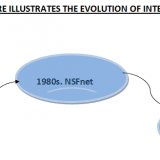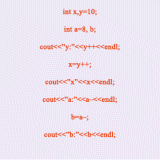Home »
Science »
Archive by category "Computer Science" (Page 2)
Evolution of networking started way back in 1969 by the development of first network called Arpanet, which led to the development of internet. ARPANET v The Seeds Of Today’s Internet Were Planted In 1969,When U.S. Department Of Defense Sponsored A Project Named ARPANET(Advanced Research Projects Agency Network). v The Goal Of This Project Was To Connect Computers At Different Universities And U.S. Defense. v Soon, The Engineers, Scientists, Students...
Continue reading »
May 24, 2014 evirtualguru_ajaygourComputer Science, Networking1 Comment
Because it’s the most popular Web server in use, you might think that Apache is a complicated piece of software. but it’s not difficult at all. Installing Apache for Windows is a simple task, due in great part to the Installation Wizard distributed by the Apache Group Whether you’re using Windows 95,98,2000, XP, NT, Vista or Windows 7-8, the installation process of the precompiled binaries is definitely the way to...
Continue reading »
May 18, 2014 evirtualguru_ajaygourPHP TutorialsNo Comment
The installation process of MySQL 5.6.x (community) on Linux, using the distribution from MySQL AB. if you’re using another flavor of UNIX, download appropriate files and follow the instructions included with the distribution. The recommended installation method for MySQL is with RPM’s. There are several RPM’s that make up a full distribution, but for a minimal installation you need the following ; MySQL-server-VERSION.i386.rmp-The MySQL server. MySQL-client-VERSION.i386.rpm-The standard MySQL client programs. To download these...
Continue reading »
May 17, 2014 evirtualguru_ajaygourComputer Science, SQLNo Comment
Increment and Decrement Operators C++ provides two Unary Operators for incrementing and decrementing variables values by 1. Increment Operator ++ Decrement Operator — These Operators operate on one Operand and used in two modes. 1) Postfix Mode 2) Prefix Mode Postfix Mode: When increment and Decrement operator appear after the operands, the corresponding operation is called Postfix Increment and Postfix Decrement. Postfix increment and decrement are performed on the basis of...
Continue reading »
May 15, 2014 Poonam taprialeVirtualGuru, Programming in C++2 Comments
Go to the Windows Start menu, choose Run, type mysql -u root -p, and press Enter. The program will then prompt you for the password. When the MySQL, Monitor starts, it provides its own prompt. At this prompt (mysql>), you type commands used to create tables, explain tables, insert data, select data, and so on. Get used to ending your commands with a semicolon (;) because it’s...
Continue reading »
May 13, 2014 evirtualguru_ajaygourComputer Science, E-Books, Educational Software, PHP Tutorials, SQLNo Comment
When using MySQL with PHP, you’ll issue the same types of commands, only within the context of the PHP code. Starting MySQL To start MySQL manually, go to the Windows Start menu, choose Run, type c:\Program Files\MySQL\MySQL Server 5.6\bin\mysql-nt.exe And press Enter. The MySQL process will now be running in the background. you can now connect to MySQL and create database and tables. Creating a Test Database Before going any further, you...
Continue reading »
May 13, 2014 evirtualguru_ajaygourComputer Science, E-Books, Educational Software, PHP Tutorials, SQLNo Comment
Conditional Operator The conditional operator is also called Ternary Arithmetic Operator as it takes 3 Operands. We can use the conditional operator to create short expression that works like if/else statements. The operator consists of the question-mark (?) and the colon (:). The syntax is given below: Syntax: Conditional expression? True expression: False expression Example: a < 0 ? b = 100 : c = 200 ; It works like If-Else...
Continue reading »
May 12, 2014 Poonam taprialComputer Science, Programming in C++, ScienceNo Comment
MySql is the database of choice for a vast majority of Web developers who use PHP, because of its efficiency and ease of use. Plus, MySQL is free and runs on multiple platforms, and its documentation sis superb. When using MySQL and PHP, it’s easiest to install MySQL first, because during the PHP installation and configuration processes, you must tell the PHP configuration script that you plan to use MySQL, in order to activate...
Continue reading »
May 12, 2014 evirtualguru_ajaygourComputer Science, E-Books, Educational Software, PHP Tutorials, SQL3 Comments
Page 2 of 4« Prev
1
2
3
4
Next »




























